Cheat Sheet: The Mauryan Empire | History for UPSC CSE PDF Download
| Table of contents |

|
| Introduction |

|
| 1. Foundation and Rise of the Mauryan Empire |

|
| 2. Prominent Rulers of the Mauryan Empire |

|
| 3. Administrative Architecture |

|
| 4. Decline of the Mauryan Empire |

|
Introduction
The Mauryan Empire was a pivotal force in ancient Indian history, marking the first political unification of the Indian subcontinent. Spanning from 321 to 185 BCE, it was characterized by centralized governance, significant territorial expansion, and cultural advancements, particularly under the reign of Ashoka the Great. This document organizes the key events, rulers, and administrative features of the Mauryan Empire into an easy-to-read chronology, facilitating quick understanding and revision.
1. Foundation and Rise of the Mauryan Empire
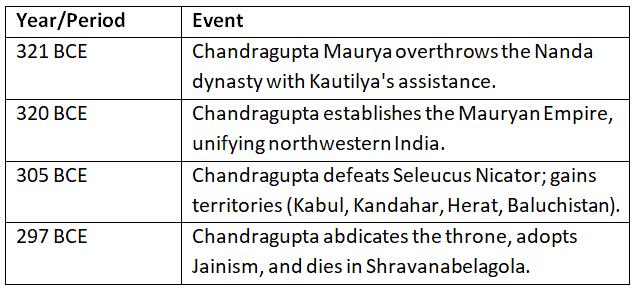
2. Prominent Rulers of the Mauryan Empire
Chandragupta Maurya (322–297 BCE)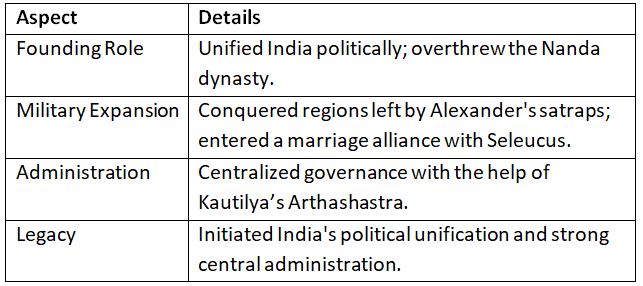
Bindusara (297–272 BCE)
Ashoka the Great (268–232 BCE)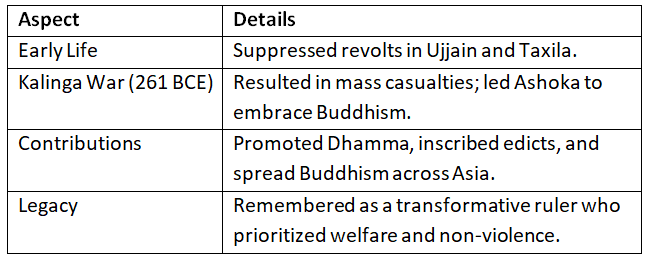
3. Administrative Architecture
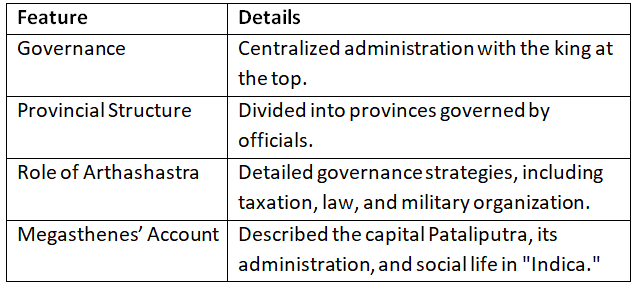
 |
Download the notes
Cheat Sheet: The Mauryan Empire
|
Download as PDF |
4. Decline of the Mauryan Empire
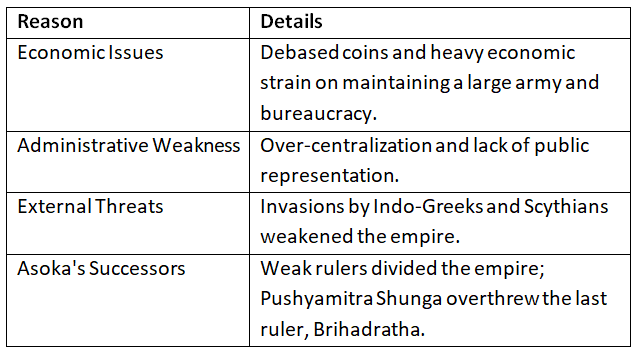
Conclusion
The Mauryan Empire set a benchmark in Indian history with its extensive governance, military strategies, and cultural advancements. While its decline was inevitable due to internal and external challenges, its legacy in administration, art, and the propagation of Buddhism continues to influence Indian civilization. By studying its chronology, one gains insights into the evolution of governance and the foundational structures of a unified India.
|
113 videos|536 docs|173 tests
|
FAQs on Cheat Sheet: The Mauryan Empire - History for UPSC CSE
| 1. What were the main sources of information about the Mauryan Empire? |  |
| 2. How did the Mauryan Empire rise to power? |  |
| 3. Who were the prominent rulers of the Mauryan Empire, and what were their contributions? |  |
| 4. What was the administrative structure of the Mauryan Empire? |  |
| 5. What were the main reasons for the decline of the Mauryan Empire? |  |




























